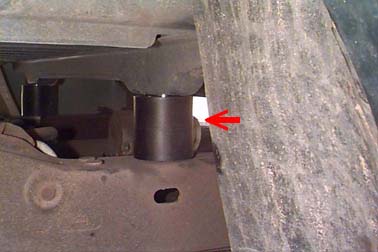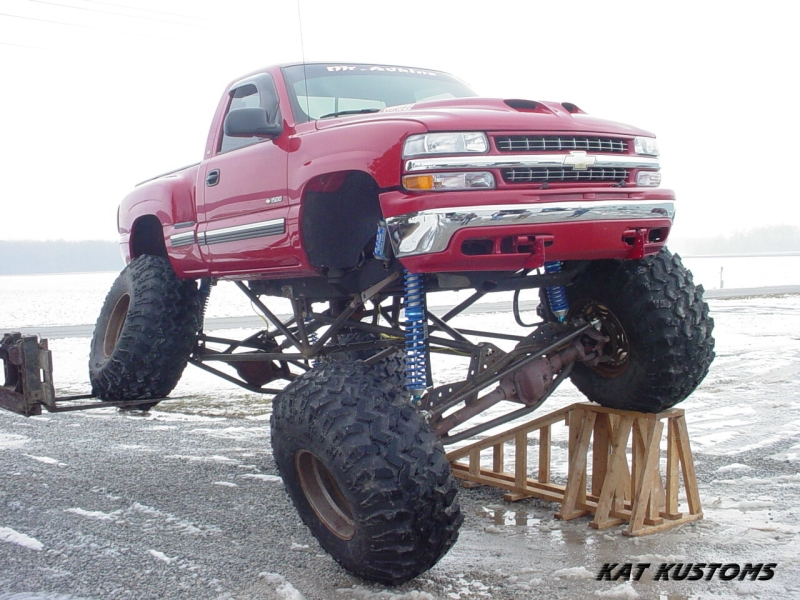The Physics of Off-Roading
By: Nicholas Beeker
Lifting
The first thing when people think off road vehicle is a lifted truck, so naturally a lift where I am going to start. The lift kit on a vehicle essentially replaces suspension components with taller or longer ones. The basic function of a lift is to increase space for larger tires and there are two basic ways of doing so. First I will talk about the cheap option a Body lift.
Body Lift
A body lift is essentially a lift that lifts the body off
of the vehicles main frame with various sized pucks or disks
stacked between to maintain stability. The purpose of this
is to raise the wheel wells enough to fit the larger tires. This
achieves the main purpose of the lift as well as keeps cost
down when you want to go off roading on a budget.

(taken from: http://www.therangerstation.com/tech_library/1998_BodyLift.html)
Above is a picture of a bodylift puck that is separating the body from the frame. One of the advantages physics wise is that unlike a suspension lift (which we will get to shortly) the body lift only lifts the body which in turn keeps the center of mass much lower and in turn reduces the risk of roll overs. You can think of it as the frame M1 with the body M2 sitting on top. When you use the body lift the only mass that is affected is mass M2 (the body). The body is farther from the ground raising its center of mass and consequently the tipping point of the vehicle, however, mass M1 (the frame) stays in place so the total COM is only affected by the body.
Suspension Lift
The second kind of lift system is a suspension lift which
lifts both the frame and the body of the vehicle by using
longer components and drop brackets for mounting points.
This is the more expensive option when lifting a vehicle
since instead of using cheap pucks you are replacing the
expensive suspension components. In most cases a basic lift
will come with new springs, shocks and drop brackets. The
drop brackets bolt on or weld on in order to lower the
attachment point of the axles suspension components. With
the axle now lower down the space between the center of the
axle and the wheel well is larger allowing larger tires to be fitted.
The suspension lift also increases flexibility of the axles
in many cases through longer springs which can expand and
compress over a longer distance. Since the body and the
frame are lifted the center of gravity is much higher then
with a body lift alone but the ground clearance from the
ground to the frame is also greater which allows you to go
over rougher terrain.

(Image from: http://www.gmfullsize.com/forum/showthread.php?t=45933)
As you can see from the above image this is not a stock vehicle, it has been extensively modified and most notably the suspension has been modified to increase ground clearance and flexibility. The body and the frame have been lifted raising the COM. The tube framing has been added to the frame to lower the attachment points for the axles and the springs are much longer and softer allowing more flexibility in the system. by lowering the mounting points via drop brackets the stress and angle of the more crucial components is reduced. This means that you do not have to get insanely heavy duty components to compensate for the stress. The springs are another factor in this, with a suspension system you can adjust the spring size and preload (or spring constant as we would say in physics) to allow the system to move more freely or require more resistance to move the same distance and depending on what you plan to do off roading you can perfect the ride by getting the right springs. Whether it is soft sandy terrain or climbing rock walls you can find the right springs to fit your needs.